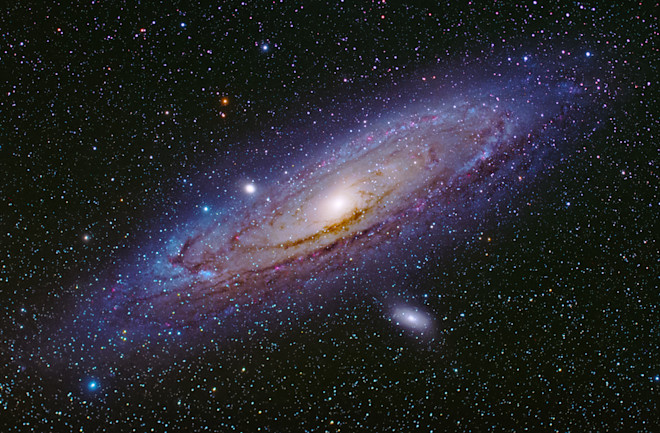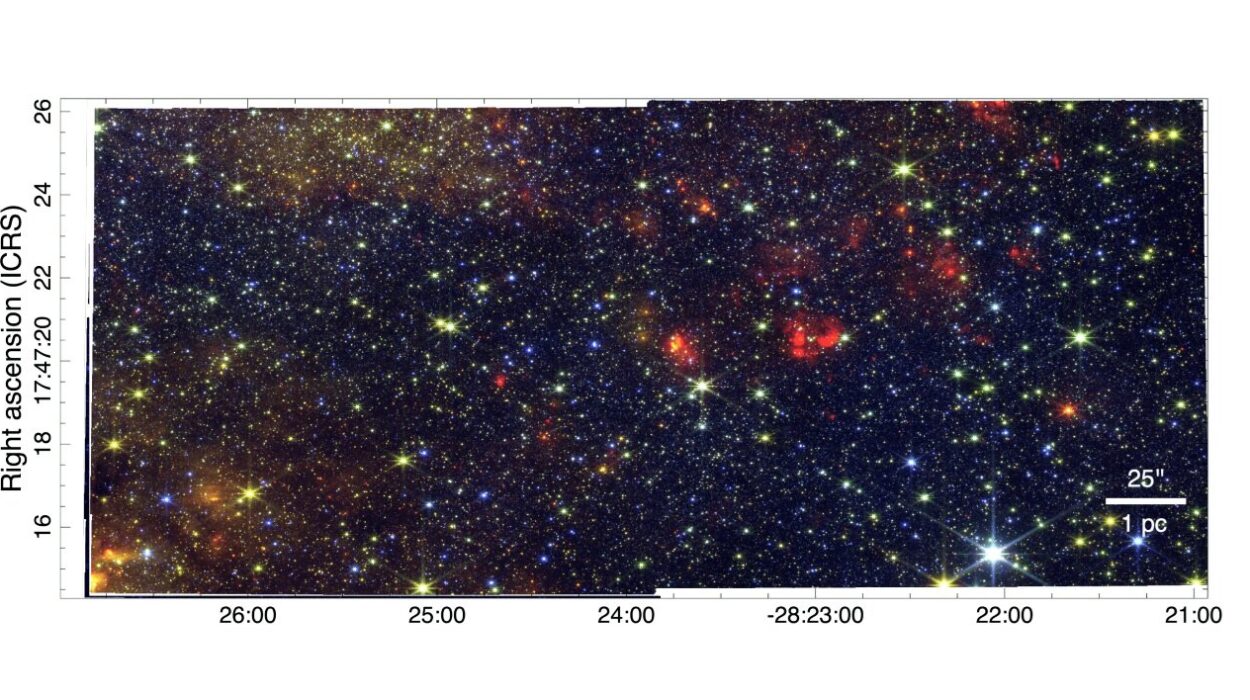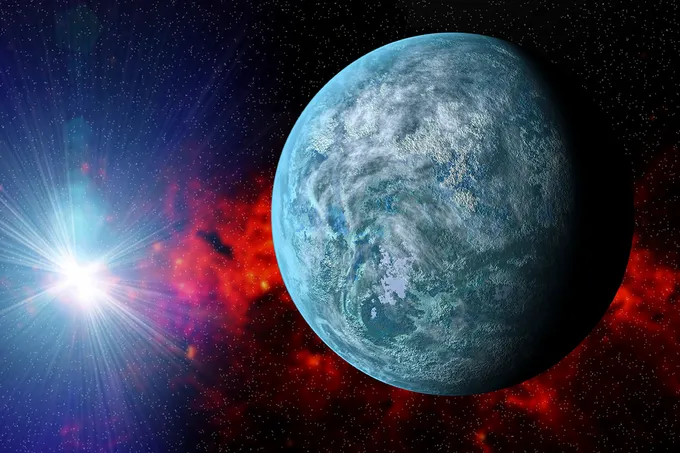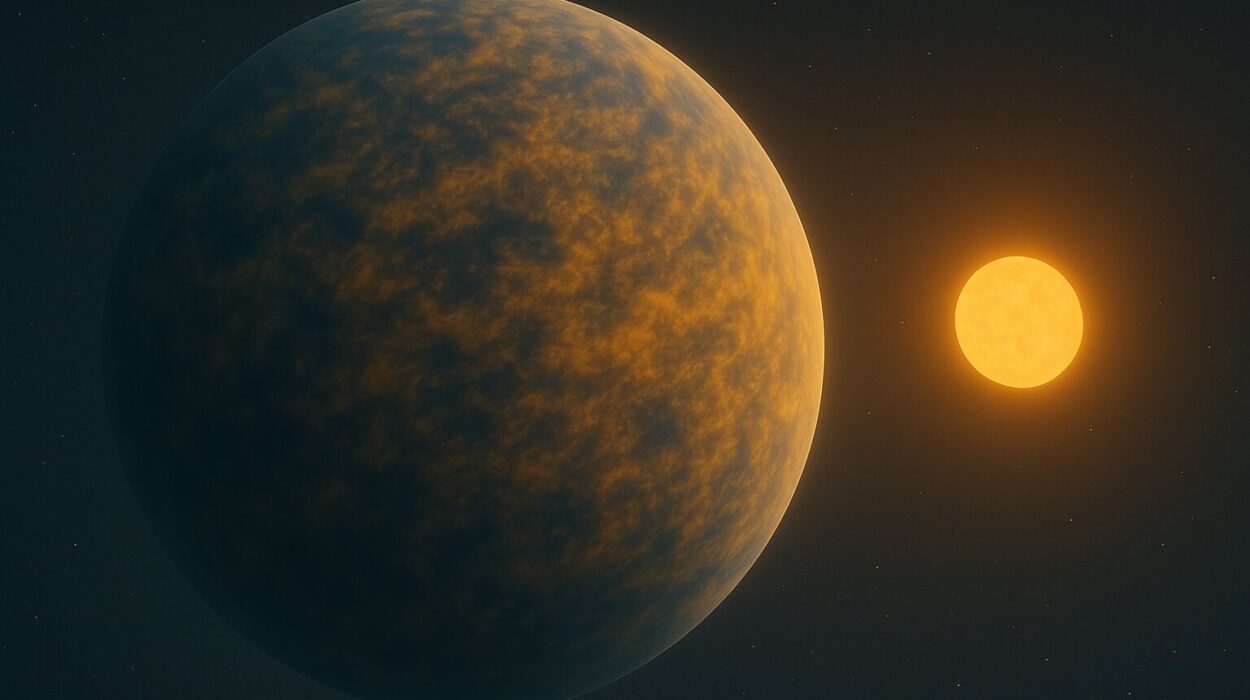The Milky Way, our home in the cosmos, is one of the most extraordinary objects in the universe. It is a sprawling, dynamic galaxy teeming with stars, nebulae, black holes, and the mysterious force of dark matter. For centuries, humans have gazed up at the night sky, marveling at the faint, cloud-like band of light that stretches across the heavens. Yet, only in recent times have we begun to uncover the true magnitude of the Milky Way’s structure, history, and the important role it plays in the larger universe.
In this article, we’ll dive deep into the fascinating world of the Milky Way galaxy. From its awe-inspiring size and structure to its origins and secrets, we’ll explore the wonders of our galaxy and what makes it a unique and essential part of our existence.
1. The Milky Way: A Massive Spiral Galaxy
The Milky Way is classified as a spiral galaxy, which means it has a distinct, flat disk-shaped structure with arms that spiral outward from a dense central bulge. It is estimated to contain 100 to 400 billion stars, along with vast amounts of interstellar gas, dust, and dark matter. The spiral arms are sites of active star formation, and they glow with the light of young, hot stars.
In addition to its iconic spiral shape, the Milky Way is surrounded by a halo of older stars and globular clusters—tight, spherical collections of stars. At its center lies a supermassive black hole called Sagittarius A*, a key player in the galaxy’s gravitational dynamics.
Though the Milky Way appears to be one vast, glowing structure from Earth, it is, in fact, a highly organized and dynamic collection of stars and cosmic phenomena. Each star, planet, nebula, and black hole within the galaxy follows its own path, yet all are bound together by the gravitational pull of the galaxy itself.
2. Size and Scale: A Galactic Giant
The Milky Way is immense, with a diameter of about 100,000 light-years. To put that in perspective, light travels at approximately 300,000 kilometers per second (186,000 miles per second). Even at that speed, it would take light 100,000 years to travel from one end of the galaxy to the other.
The galaxy’s thickness is not uniform—it bulges at the center but tapers off near the edges. The galactic disk, which contains the stars and much of the galaxy’s visible matter, is about 1,000 light-years thick. Beyond that, there’s a halo of faint, older stars and dark matter, which stretches much farther into space. The galaxy’s true extent may never be fully measured, as its outer limits are difficult to define, especially due to the influence of dark matter.
To further emphasize the Milky Way’s vastness: it is estimated that the galaxy contains at least 100 billion stars. With each star possibly having planets of its own, the galaxy may contain trillions of planets, many of which remain undiscovered. Even more staggering is the fact that the Milky Way is just one of an estimated 100 billion galaxies in the observable universe. And yet, despite its enormity, our galaxy is just a speck in the grand cosmos.
3. The Milky Way’s Galactic Center: The Heart of the Galaxy
At the very center of the Milky Way lies a region of intense gravitational pull, known as the galactic core. Here, astronomers believe a supermassive black hole, Sagittarius A*, lies dormant. This black hole has an estimated mass of around 4 million times that of the Sun.
The core is surrounded by a dense concentration of stars and gas clouds, making it one of the most mysterious and intriguing areas of the galaxy. Although Sagittarius A* is a black hole, it does not pose an immediate threat to Earth due to its vast distance (about 26,000 light-years away). However, the immense gravitational forces near the black hole affect the orbits of nearby stars, creating a unique cosmic environment.
In addition to the supermassive black hole, the galactic core is home to several phenomena that scientists are still working to understand. For instance, there are massive clouds of gas, sometimes referred to as “star nurseries,” where new stars are born from the dense clouds of hydrogen and other elements. These star-forming regions glow brightly in infrared light, providing insights into the early stages of stellar birth.
4. The Milky Way’s Arms: Spirals of Stars and Gas
One of the most iconic features of the Milky Way is its spiral arms, which give it the appearance of a rotating pinwheel. These arms are not static; instead, they represent the density waves of stars, gas, and dust that move through the galaxy, creating regions of intense star formation.
The Milky Way’s arms are named based on their relative position to the galactic center. There are four primary arms: the Perseus Arm, the Cygnus Arm, the Orion Arm, and the Sagittarius Arm. Earth resides in the Orion Arm, often referred to as the Orion Spur, a minor arm located between the larger Perseus and Sagittarius Arms.
Stars within these spiral arms are relatively young compared to the older stars found in the galactic halo and bulge. These arms are also where nebulae—vast clouds of gas and dust—are found. Nebulae serve as stellar nurseries, the locations where new stars are born from the gravitational collapse of gas and dust clouds.
The spiral shape of the galaxy is not static. The arms themselves rotate around the galactic center, causing stars and other objects to move in complex orbits. The stars in the Milky Way do not all travel together at the same speed. In fact, Earth is moving at a speed of about 828,000 kilometers per hour (514,000 miles per hour), making a complete orbit around the galactic center once every 225 million years. This means our Solar System is constantly in motion, traveling through the Milky Way on what is often referred to as the “galactic year.”
5. The Sun’s Role in the Milky Way: Not the Center of the Universe
While the Sun is crucial to life on Earth, it is far from the most significant or powerful object in the Milky Way. Located about 26,000 light-years from the galactic center, the Sun is just one of the hundreds of billions of stars that populate the galaxy.
In fact, the Sun resides in a relatively quiet area of the galaxy known as the Orion Arm, or the Local Spur. This region is far from the busy galactic center, where star formation is much more intense. The Sun is also relatively young, at about 4.6 billion years old, and will eventually burn out and become a red giant before ending its life as a white dwarf.
Despite its modest location, the Sun has an essential role in the Milky Way. It influences the dynamics of the entire Solar System, and its gravitational pull keeps the planets in orbit. Additionally, the Sun’s radiation provides the energy necessary for life on Earth.
However, the Sun is not at the center of the Milky Way’s gravitational pull. The true center of the Milky Way is Sagittarius A*, a supermassive black hole. The Sun’s movement, along with the Solar System, is part of the larger galactic dance around this center. This process is not unique to our galaxy. All stars in the Milky Way orbit around the galactic center, drawn by its immense gravitational force.
6. The History and Formation of the Milky Way
The story of the Milky Way’s formation spans billions of years. The most widely accepted theory is that the galaxy began as a small group of stars, which gradually grew in size by merging with other smaller galaxies. Over time, this process led to the formation of the spiral structure we see today.
The Milky Way’s formation likely began around 13.6 billion years ago, just a few hundred million years after the Big Bang. Early on, the galaxy may have been more irregular, with stars forming in scattered regions across the cosmos. As the galaxy grew, it began to acquire a more ordered, disk-like shape. This structure is thought to have developed as angular momentum (the tendency of rotating bodies to keep rotating) caused stars and other materials to flatten out.
Through the process of accretion, the Milky Way gathered gas, dust, and dark matter, eventually becoming the large spiral galaxy it is today. The interaction with other nearby galaxies has also played a role in shaping the Milky Way. Evidence of past mergers can be seen in the galaxy’s halo, where older stars from previous galactic collisions are scattered.
7. The Role of Dark Matter in the Milky Way
A large portion of the Milky Way’s mass—about 90%—is composed of a mysterious substance known as dark matter. Despite its name, dark matter does not emit, absorb, or reflect light, making it invisible to telescopes. Yet, scientists have inferred its existence through its gravitational effects on visible matter, such as stars and galaxies.
Dark matter is believed to be responsible for holding galaxies together. Without it, the gravitational pull of visible matter alone would not be enough to keep stars from flying off into space. The dark matter in the Milky Way forms a massive, unseen halo that extends far beyond the galactic disk. This halo influences the rotation of the galaxy, and its study remains one of the most significant puzzles in modern physics and astronomy.
While the exact nature of dark matter remains elusive, its gravitational influence is undeniable. Some scientists speculate that dark matter may consist of unknown subatomic particles, while others suggest it could be made up of more exotic objects like primordial black holes. Until scientists can directly detect dark matter, it will remain one of the most mysterious and exciting topics in astrophysics.
8. The Milky Way and Its Neighbors: The Local Group
The Milky Way is not an isolated galaxy. It is part of a larger cosmic structure known as the Local Group, a collection of more than **50
galaxies** bound together by gravity. The largest members of the Local Group are the Milky Way, the Andromeda Galaxy (M31), and the Triangulum Galaxy (M33).
The Andromeda Galaxy, located about 2.5 million light-years away, is the Milky Way’s closest spiral galaxy and is on a collision course with our own. In about 4.5 billion years, the Milky Way and Andromeda will collide and eventually merge into a new, larger galaxy, sometimes referred to as Milkomeda or Milkomeda. This merger will reshape both galaxies, possibly triggering new star formation as gas clouds collide and compress.
The Triangulum Galaxy is another major member of the Local Group and is located about 3 million light-years away. Although smaller than the Milky Way and Andromeda, Triangulum is still one of the most significant galaxies in the Local Group.
The dynamics of the Local Group are still being studied, as galaxies interact, merge, and influence each other through gravitational forces. The Milky Way’s future interactions with its neighbors, especially the Andromeda Galaxy, will help scientists better understand the fate of galaxies in the universe.
9. Our Galactic Neighborhood: The Sun’s Local Environment
The Milky Way is vast, and our Solar System is located in a relatively quiet part of it. Within the galactic disk, the Sun resides in the Orion Arm—a minor spiral arm nestled between two larger arms, the Perseus and Sagittarius arms. Our solar neighborhood consists of thousands of stars, including many that are part of the Local Bubble, a region of space with fewer stars and gas clouds compared to other parts of the galaxy.
The Local Bubble may have been created by supernova explosions, which spread out and cleared gas and dust in this region of space. This has created a relatively “clean” environment for our Solar System, which allows us to view the stars and nebulae around us without much interference from nearby material.
While the Solar System orbits the galactic center at high speed, the region in which we live remains surprisingly quiet. There are some exceptions, such as the Alpha Centauri system, which is the closest star system to the Sun, about 4.37 light-years away.
Despite this relative quiet, our Solar System is still part of a larger cosmic drama. As the galaxy continues to rotate, the Solar System participates in the ongoing galactic dance, carrying us through the stars as we orbit the Milky Way’s core.
10. The Milky Way’s Future: The End of the Galaxy?
The Milky Way is about 13.6 billion years old, and like all things in the universe, it has a finite life span. In the far future, the galaxy will undergo significant changes, starting with its collision with the Andromeda Galaxy. As mentioned earlier, this merger will reshape both galaxies and create a new, larger galaxy.
After the collision, the new galaxy will likely continue to evolve, with the stars settling into new orbits and the galactic structure shifting. Over billions of years, the star formation rate will decline as the gas needed for new stars becomes exhausted. Eventually, the galaxy will be populated primarily by white dwarfs, neutron stars, and black holes.
The eventual end of the Milky Way will not be a sudden event. Rather, it will be a gradual process as stars burn out and the galaxy ages. But for now, the Milky Way remains a vibrant, dynamic galaxy, teeming with stars and the potential for new discoveries.






